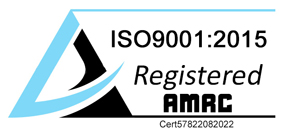Anodised Aluminium
Anodised Aluminium is the best in class
Modern architects require building materials that not only allow them to design and subsequently build structures that are visually striking, but to do so in an environmentally friendly, sustainable manner. Resulting in buildings that will stand the test of time, visually and in their durability. As the technology and techniques develop in the construction industry, the longevity and reliability of sustainably sourced materials must meet increasingly demanding expectations. Materials must be as malleable as they are reliable, maximising scope for design and overall durability.
Anodisation: the ultimate process for uniformity
From brushed finishes and aluminium mesh to tread plates and perforated sheets – building applications requires aluminium to be transformed into a variety of different shapes and textured surfaces. Because anodisation is an electro-chemical immersion process as opposed to a finish like paint, the end product after anodisation is decidedly regular and uniform. Avoiding the risk of intermittent thickness’ or orange-peel effect as is often found whilst painting aluminium.
Aluminium used in the construction industry is quite frequently extruded, resulting in complicated surfaces and profiles. Spraying processes involving paint and especially powder-coating do not provide a reliable coverage for such parts, often leaving the non-visible surface within the extrusion blank and unfinished.
Anodisation is more reliable than any other finish
As the anodic layer forms part of the substrate of the metal, anodised aluminium when applied properly is completely impermeable from external forces. Paints and coatings will always be porous and subject to damaging physical changes caused by severe changes in temperature and other environmental factors. The durability of paints and other coatings are linked to their glass transition temperature – this is the point at which the properties of that coating switch from elasticity to brittleness. In particularly cold conditions, paints become brittle, will chip and expose the metal beneath. The anodic layer is not subject to temperature fluctuations, either up or down.
Anodised aluminium and the environment
As anodised aluminium is made up of only the base metal, its alloying elements and oxygen – it is fully recyclable without needing to apply chemical processes (like chromating) to remove layers and finishes. The process of anodisation produces little to no waste, does not produce CO2 (nor does the recycling process) or solvent emissions. In addition, the healthy market involved around quality scrap aluminium has resulted in the cash value of anodised aluminium can be offset against the cost of demolition.
Unlike other building materials, aluminium can be recycled repeatedly through melting and re-forming with very little loss of base material on each rotation. In Europe, 30% of aluminium built with is from recycled sources and 90% of aluminium used in buildings is recycled upon the buildings demolition. The recycling process also only uses 5% of the energy used to produce primary aluminium.
Experienced Designers & Manufacturers
We create aluminium profiles and extrusions, designed and manufactured especially to suit your requirements. Contact our team today to arrange a quote and see how our service can help your business.
Flexible Volumes of Product
For one of pieces or larger bulk order, simply get in touch with our team today to get the ball rolling and start our bespoke design process.


